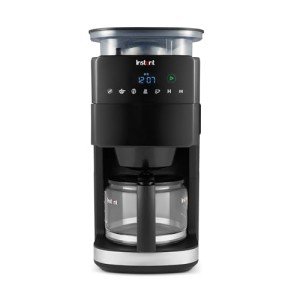견적문의
페이지 정보
작성자 Lupita 댓글댓글 0건 조회조회 28회 작성일작성일 25-10-29 11:58본문
| 회사명 | WG |
|---|---|
| 담당자명 | Lupita |
| 전화번호 | IO |
| 휴대전화 | TD |
| 이메일 | lupitaewan@terra.com.br |
| 프로젝트유형 | |
|---|---|
| 제작유형 | |
| 제작예산 | |
| 현재사이트 | |
| 참고사이트1 | |
| 참고사이트2 |

The Complete Guide to Professional Espresso Machines
Espresso Brewer machines exemplify the enthusiasm for coffee, merging art and science to produce a rewarding drink experience. From busy coffeehouse to upscale restaurants, these machines play a necessary function in producing abundant, focused coffee shots. This post aims to offer an extensive understanding of professional Budget Espresso Machine machines, covering their types, functionalities, maintenance, and responses to often asked concerns.
Table of Contents
- Summary of Professional Espresso Machines
- Kinds Of Professional Espresso Machines
- 2.1. Manual Espresso Machines
- 2.2. Semi-Automatic Espresso Machines
- 2.3. Automatic Espresso Machines
- 2.4. Super-Automatic Espresso Machines
- Key Features to Consider
- Upkeep Tips for Longevity
- Frequently Asked Questions
- Conclusion
1. Overview of Professional Espresso Machines
Professional espresso machines are powerful equipment created to draw out espresso effectively while guaranteeing consistency and quality. Unlike home machines, these systems are constructed for high-volume use, typically with advanced features to accommodate innovative brewing strategies.
2. Kinds Of Professional Espresso Machines
Selecting the best kind of espresso machine depends substantially on the requirements of the establishment. Below is a breakdown of the different types available in the market.
| Type | Description | Suitable For |
|---|---|---|
| Manual Espresso Machines | Requires barista skill; users manually manage the extraction process. | Artisan coffee shops and enthusiasts. |
| Semi-Automatic Machines | Provides some automation; users manage water circulation. | A lot of coffee stores and dining establishments. |
| Automatic Machines | Automatically controls water amount; user sets dose. | Hectic cafes or facilities. |
| Super-Automatic Machines | Fully automated, grinding, developing, and cleansing with a tap. | High-volume settings with very little staff. |
2.1. Manual Espresso Machines
Manual Espresso Machine Under £500 machines are classic and popular amongst purists who delight in fine-tuning the espresso-brewing process. It requires considerable ability, as the operator needs to by hand control the water circulation and pressure.
2.2. Semi-Automatic Espresso Machines
Semi-automatic machines are the most extensively used in cafes and coffee stores. They supply user control over the water flow, permitting baristas to develop regularly excellent espresso shots while still having control over developing variables.
2.3. Automatic Espresso Machines
In automatic machines, the developing process is automated. The machine fills the necessary water quantity for each shot, permitting high efficiency in hectic environments. Although it offers less versatility in brewing strategies, the consistency is unparalleled.
2.4. Super-Automatic Espresso Machines
Super-automatic machines take benefit to the next level by controlling every step of the coffee-making procedure. From grinding the beans to frothing the milk, these machines are perfect for high-volume coffee shops where speed and efficiency are critical.
3. Secret Features to Consider
When buying a professional espresso machine, it's vital to think about the following features:
| Feature | Importance |
|---|---|
| Boiler Type | Single boiler vs. dual boiler. Dual boilers enable developing and steaming simultaneously. |
| Group Heads | Multi-group heads deal with numerous beverages simultaneously, increasing performance. |
| Pressure Control | Constant pressure is important for quality extraction. |
| Steam Wand | Quality frothing capabilities for milk-based beverages. |
| Alleviate of Cleaning | Removable parts can conserve time on upkeep and make sure health. |
| Sturdiness | Look for sturdy materials that will hold up against constant use. |
| Size | Must fit the desired space while accommodating user needs. |
4. Upkeep Tips for Longevity
Maintaining a professional espresso machine is important for guaranteeing longevity and ideal performance. Here are some crucial upkeep ideas:
- Daily Cleaning: Clean the group heads and portafilters to get rid of coffee oils and residues.
- Weekly Backflush: Use a blind filter to backflush the machine, keeping the internals clean.
- Descale Regularly: Pinto your machine's guidelines for descaling frequency depending upon your water solidity.
- Check Seals and Gaskets: Replace used parts to prevent leakages and preserve pressure.
- Check Water Quality: Use filtered water to decrease mineral accumulation that can damage the machine.
- Professional Maintenance: Schedule professional maintenance to guarantee all systems run effectively.
5. Regularly Asked Questions
Q1: How much does a professional espresso machine cost?A1: The cost of a professional espresso machine can vary from ₤ 2,000 to over ₤ 20,000, depending upon the type, brand name, and functions. Q2: What is the best machine for
a small coffee shop?A2: Semi-automatic machines are frequently best
for small coffee stores since they strike a balance between control and ease of use. Q3: How long do professional espresso machines last?A3: With correct upkeep, a professional espresso machine can last
anywhere from 5 to 15 years. Q4: What type of training does a Barista Espresso Machine requirement to run an espresso machine?A4: Baristas ought to learnthe technical elements of espresso extraction, milk frothing, and basic machine maintenance. Q5: Are super-automatic machines worth the investment?A5: For high-volume establishments with minimal staff, super-automatic machines can dramatically
minimize labor while ensuring consistent quality. 6. Conclusion Purchasing a professional espresso machine is vital for any coffee company intending to provide premium beverages. Understanding the types readily available, in addition to their functions and


